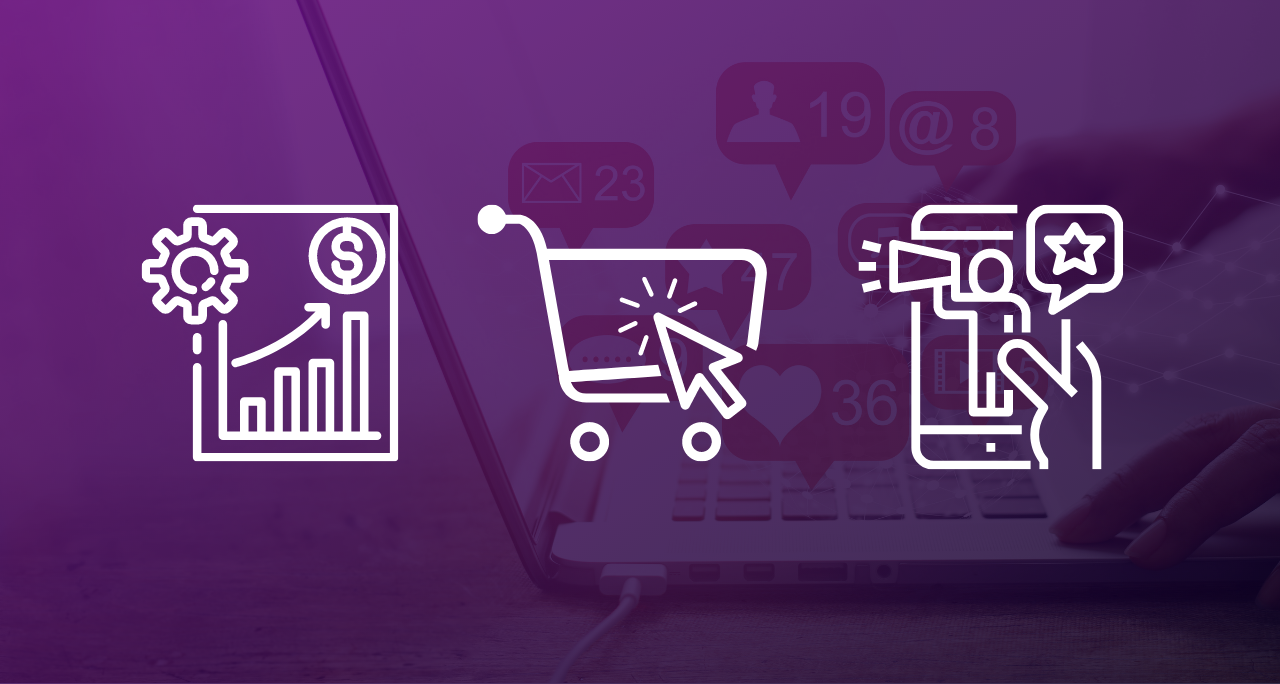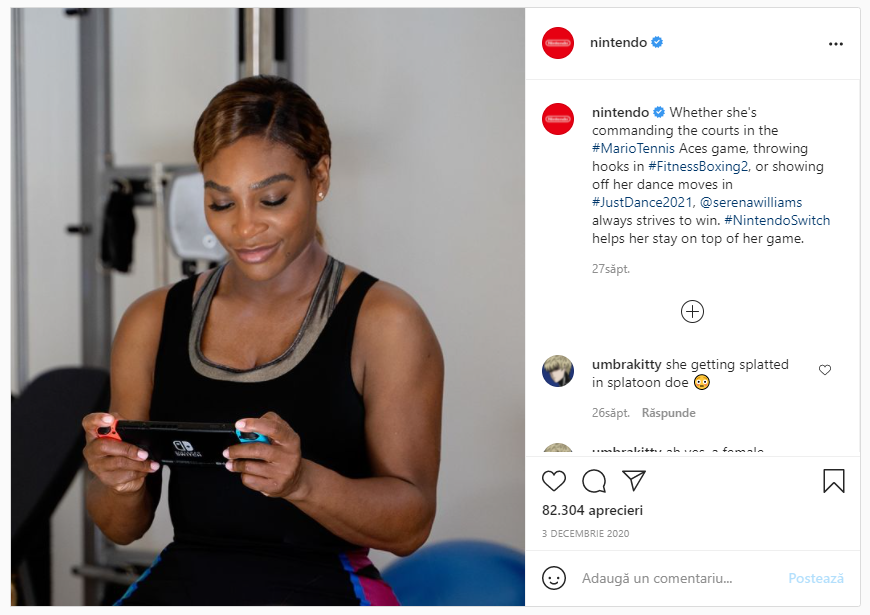‘Influencer marketing’ means engaging popular online personalities to promote your product or service. There are two distinct approaches when using influencers to generate revenue:
- Sending products for free (including free trials for software) and hoping to be featured on their channels;
- Arranging an official contract with or without compensation in return for either promoting a specific product or product line, or simply providing education or entertainment.
|
What is an ‘influencer’ in 2021?
|
The first approach (known as influencer ‘gifting’) is basically a gamble. The idea is that if the influencer likes the product (or even better, if they already use it) then they’ll mention it on their channel, giving you free publicity.
This has worked wonders for many brands but there is no guarantee of success. In fact, if the influencer strongly dislikes the product for some reason, it can backfire spectacularly and alienate potential buyers.
The second approach is where we’ll focus our attention in this post. It focuses on building relationships with influencers in order to access primed, curated audiences who are a great match for your product. To set the context, we’ll be referring mostly to B2C eCommerce sales, but some of these principles can easily apply to B2B online sales as well.
Why is influencer marketing for eCommerce so effective?
Influencers are incredibly powerful for eCommerce sales because followers implicitly trust whatever they say.
Across most age groups, we are conditioned to search for online reviews and feedback before making a purchase. Usually these are by our fellow average Joes, and even this unsubstantiated social proof is enough to sway our decision.
But because of the illusion of “friendship” between influencers and followers, there is a staggering level of trust. When the best eCommerce influencers recommend a product, it’s like the most valuable ‘review’ imaginable; it’s extremely likely that a follower will go with that suggestion, just like they would if a close friend or colleague made the recommendation.
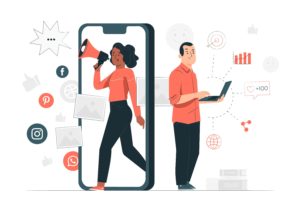
Types of influencer marketing
While the bulk of this post provides guidance on identifying the right influencers, building relationships and approaching the process, it’s worth noting the different types of influencer campaigns you can run. The influencer marketing strategy you choose will depend on your product and the specific influencer, but here’s a quick overview of what you might try.
Discount codes
If you’ve watched a YouTube video or listened to a podcast in the last few years, you’re probably familiar with the, “Today’s content is brought to you by…” and “Today we want to talk to xxx about…” lines.
These influencer promotions almost always lead to a discount code or promotion tailored to that audience. For example, “Use the link in the video description for 15% off your next order”. Like any other discount campaign, the idea is to generate huge interest, get as many people on the website as possible and convert some of them to long-term customers.
The discount code is seriously alluring for followers and can be a great way to build awareness and sales for the business. Discount codes are also very popular on platforms like Instagram, where influencers will create a post or series of posts promoting the product.
Giveaways and competitions
The way these work is simple: the brand will offer up a product or service (free of charge) and pay the influencer to run a competition to win these as a prize. The competition can be structured endless ways, but common ideas are:
- Tagging a friend (and usually following/subscribing to the brand on the platform)
- Commenting what you’d do with the prize
- Sharing the post on their own page/channel/account
- Submitting a creative idea (new name, logo, drawing, product concept)
- Submitting a photo of yourself doing something related to the product
- Write the best explanation of why you deserve it
The whole point of this is to create engagement with the brand and build up a positive reputation. And of course, indirectly encourage sales. The idea is that the cost of influencer + products will be less than the return.
What can happen, however, is that a competition campaign goes viral (or even somewhat viral) and attracts way more attention than expected. This extra reach is FREE and can lead to sensational results—but you can’t bank on it.
Brand ambassador
When an influencer becomes the face of the brand (usually for a limited time) they are a brand ambassador. This will often evolve from a more traditional influencer relationship, with a partner who truly embodies your brand and has a great connection with your target audience. While we recommend most brands to hit up smaller influencers, a brand ambassador agreement is usually reserved for bigger, better-known stars.
This kind of campaign lends massive authenticity to your campaign. Long-term ambassador roles are also great because they ensure influencers do not promote any competitor brands during the collaboration period!
Product collaboration
This is a less-common approach where the brand will work with an influencer to create a new, or newly branded, version of a product.
This will usually happen with established brand ambassadors who love and regularly use your product, where their followers know they love and use the product. This might be a simple aesthetic change with influencer branding, or a full-scale product design to address the special needs and features desired by the influencer…and then putting the product on sale! The idea is to engage the influencer’s specific followers with an attractive, usually high-value offer.
But these are just four examples—as we said there are endless possibilities out there. Social media takeovers, events hosting, affiliate marketing, sponsored blog posts and “unboxing” are all popular options, and each of these can boost eCommerce sales when executed effectively.
How to build your influencer campaign
Now you’ve got some context, it’s time to think about what you’re trying to achieve. Influencer marketing is like any other channel: you don’t just throw money and products at someone famous and watch your bank balance. You need to carefully plan for success—but this doesn’t need to be complicated! Simply answer these questions:
- What is your specific goal(s) for this campaign?
- How will you measure the success of each goal?
As long as you follow some guidelines on matching your influencer with your audience, even just these two yardsticks will allow you to keep the campaign on-track and evaluate its success. Keep reading to find out what those are!

Find the perfect influencers for your campaign
When thinking of which influencers to approach, it’s crucial that you don’t just choose one you like; they need to firmly align with your brand’s voice and tone, mission, and audience. And of course, they must be able to produce top-quality, engaging content to help drive conversions:
- Would they love your brand?
- Are they already advocates?
- Does their personality reflect your brand’s personality?
- Do they have creative and original ideas in their content?
- Can they create high-quality sponsored posts?
- Do they post high-quality content?
- Would it be easy to work with them?
- Are their subscribers or followers potential customers?
- What level of engagement does the channel seem to get?
These points can be highly effective in helping shortlist potential candidates. But where do you start the search?
Bonus: Interested in discovering the perfect influencers for your campaign? Check out our Ultimate List of Top 60 eCommerce Experts You Need To Follow on Twitter!
An easy way to start is by simply Googling products or problems in your niche. If they’re getting high rankings for competitive industry keywords, there’s a good chance they have built some authority in the field. Take note of which social media stars or thought leaders pop up and then shortlist those active on your highest-priority channels.

Choosing a channel relevant to your niche
When it comes to advertising and marketing, it always pays to know your customers. If you know your average customer is 50-60 years old and only uses social media to look at photos of their grandkids, you’re probably burning money with a 19-year-old Instagram influencer.
In this case, your target audience doesn’t use Instagram, but maybe they do listen to national radio stations a lot; could you contact someone there and go that route? It’s important to be open-minded with influencer marketing, and it’s always about the quality of engagement, not the raw quantity.
In general, most likely you’ll start with Instagram, Facebook or YouTube, since they’re magnets for both influencers and billions of active users every month, before gradually figuring out which channels get the best results for you.

Use audience size as a yardstick for cost
As a rule of thumb, a bigger following means a higher fee for the influencer. This is fantastic when you’re spending big to earn even bigger in return. However, for many companies the risk of a failed campaign is too high to splash out over $1,000 per Instagram post.
So especially if it’s your first foray into influencer marketing, if you are still in testing mode to see which channels work best for your audience, look for options on par with your budget. So-called “micro influencers” are also easier to contact and work with, since they won’t have complex media teams and hoops to jump through.
It’s important to remember that not all influencers charge a fee. There are two common cases:
- Many micro influencers will use the association with your brand as a platform for self-promotion. Since both parties directly benefit, it’s always worth asking the question.
- Influencers of all sizes will occasionally endorse products, movements, or campaigns which strongly resonate with them.

Examples of successful influencer campaigns
Brilliant, revenue-driving influencer campaigns can be found all over the internet. We’ve picked out 3 examples to share with you, each with their own unique goals and execution.
Chris Martin and Cisco
As part of their “Teachers: Our Everyday Heroes” campaign, global tech giant Cisco engaged Chris Martin (lead singer of Coldplay, one of the world’s most popular bands) for virtual get togethers with school kids and teachers. Martin shared his experience and perspective on education, learning, and music as a career, and answered loads of questions from the pupils.
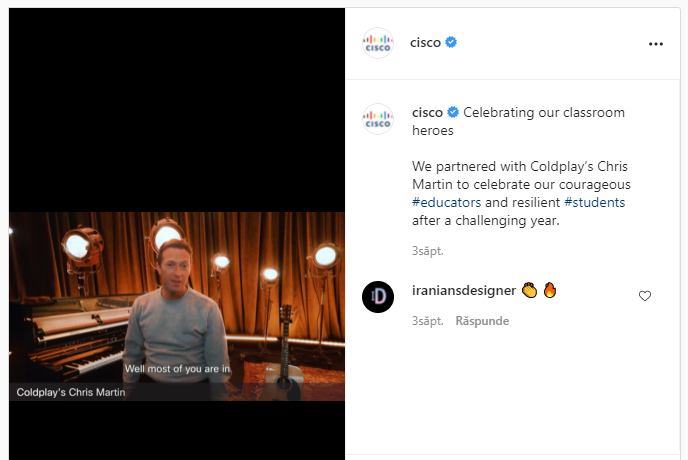
Brian Fanzo and Buffer
A few years ago, celebrated Futurist and keynote speaker Brian Fanzo (aka iSocialFanz) took over Buffer’s Instagram stories for a full day. The goal was to get Brian sharing brilliant advice on social media and online community building. It was a bold move from Buffer that generated a ton of buzz and social media engagement.
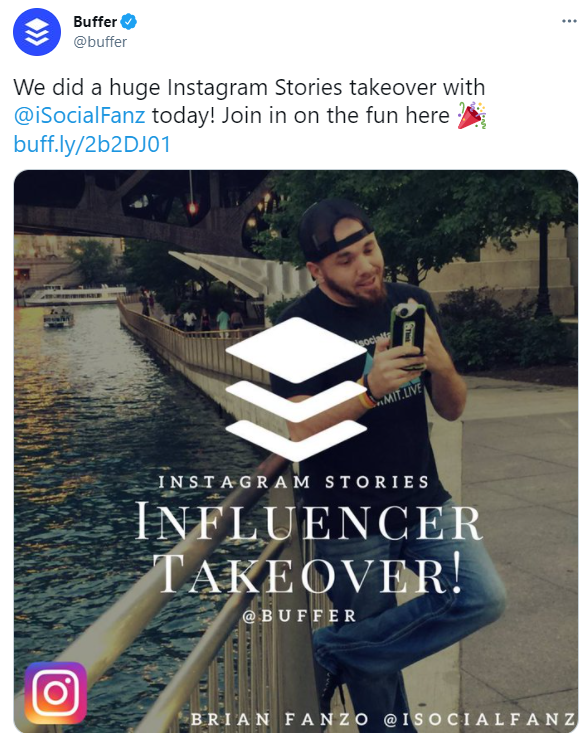
Serena Williams and Nintendo Switch
In a much more “traditional” influencer campaign, Nintendo engaged Serena Williams (one of the biggest sports megastars on the planet) to film some ads of her playing their Switch console. While Williams undoubtedly commands one of the highest fees in the industry, the reach, appeal, engagement and eventual revenue will almost certainly have dwarfed the cost.
Actionable tips for working with influencers
Having a clear goal and finding the right influencer are the most critical parts of the process. From there, it’s a matter of meeting up, seeing what they can do and figuring out the details! But to round this post off, we wanted to share some tips on things we’ve figured out during our years managing influencers.
Prioritize engagement over volume
Micro-influencers with between 1,000 and 10,000 followers have been shown to have significantly higher engagement rates than any other influencer category. Yet as we’ve said, many influencers charge based simply on audience size.
If you can identify a small influencer with massive engagement, you might be able to negotiate a smaller fee and expect a bigger return on your investment compared to hiring a bigger fish.
Find influencers who are already brand advocates
If you’ve found an influencer who already loves your brand, then you’ve hit the jackpot—they will already know and understand your ethos, motivation, desire, and voice! To root them out, you can search for reviews or user-generated content about your product across social media or search popular posts on Twitter and Facebook. If someone fits the bill, consider reaching out.
Use metrics to compare influencers
With influencer marketing, things can get a little airy-fairy. However, it is absolutely legitimate to use cold, hard metrics to influence your decision.
- How many followers does each influencer have?
- What engagement rate do they have?
- What’s the average number of comments and shares they receive?
- Can you estimate the ROI for a product-placement post?
- What rate is their channel growing at?
The answers to these questions will help narrow down a list of potential influencers.
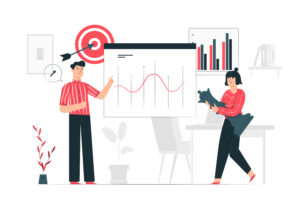
Do not send templated or spammy enquiries
If you really want an influencer to work with you, take the time to send them a personal message showing why you think their channel matches your brand, how it can benefit both of you, and so on. Copy-paste outreach does not work and will burn bridges before you’ve even started walking.
Trust the influencer to provide creative direction
The creative execution of your campaign cannot be overlooked. Whether this is delivered entirely by you, the influencer, or as a collaboration, effort needs to be put in to ensure top-quality output. The more creative and visually enticing the promotion, the more likely it is to catch attention.
Be sure to ask your influencer how exactly they curate their content and what they can bring to the table for the campaign.
When done right, influencer marketing can be a fantastic strategy for eCommerce companies and businesses in general to generate leads, build brand awareness and long-term relationships.
Is there any influencer campaign you liked? Share your favorite one in the comments below!

